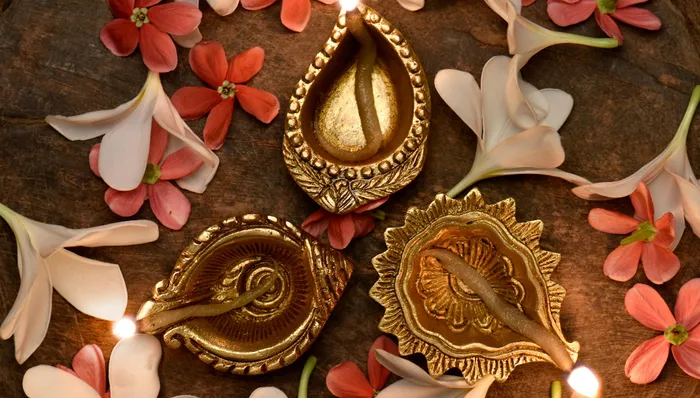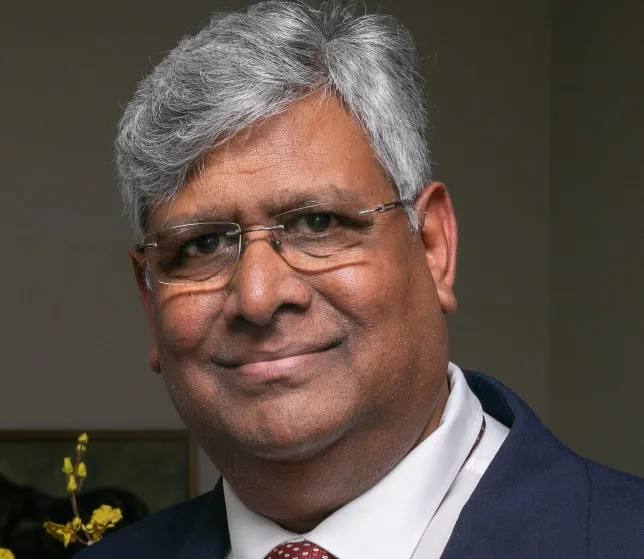Diwali's evolution: tradition meets convenience
Reflections

Diwali will be celebrated on October 20.
Image: Naveen Sahu/Pexels
THE South African Hindu Maha Sabha is late in announcing the date for the “Festival of Lights” - it usually does in a press release a good few weeks before the event. With no intention of stealing the thunder from the umbrella body of some Hindu organisations, let me reaffirm that Deepavali or Diwali is around the corner, falling on Monday, October 20.
My Tamil upbringing has me referring to it mostly as Deepavali when I speak. This is the name used widely in South India and which refers to "a row of lighted lamps". Diwali is the name most often used in North India with similar meaning and is widely recognised in English.
“Diwali” is also shorter and saves space when writing headlines and in print advertisements. To be fair to the Hindu Maha Sabha, Lokesh Maharaj, chairman of the Sabha’s Priest’s Council, had announced the Diwali date for 2025 in January this year. But this was a long time ago for someone like me who battles to remember my wedding anniversary or what I had for breakfast.
Meanwhile, so much has happened. We have to contend with accepting that South Africa has been free from scheduled load shedding since earlier this year. Touch wood. We have also had to put up with Donald Trump’s new reign as US presidency which has triggered sweeping policy changes that have reshaped international relations and domestic governance. Let’s not even think about his off-the-cuff, blunt remarks about weighty matters such as climate change and immigration.
Then Pope Leo XIV became the first American Pope, replacing Pope Francis who passed away at the age of 88 after a cerebral stroke. Not long thereafter, we had the bombshell in July when Lieutenant General Nhlanhla Mkhwanazi, the SAPS KwaZulu-Natal Provincial Commissioner, exposed deep-rooted corruption and political interference within the criminal justice system.
As I pen this column, I am also following on TV the gripping testimony at the subsequent Madlanga Commission of Inquiry. Another distraction (for me, at least) from keeping tab of looming Diwali has been Nando’s launch earlier this month of its Mac & Cheese side dish, baked in a creamy, cheese-infused béchamel sauce with crunchy peri-peri topping.
When Pietermaritzburg Advocate Ranjiv Nirghin took over as President of the Hindu Maha Sabha, he indicated he had big shoes to fill after the passing away of Ashwin Trikamjee. Perhaps he still needs to get to the “Diwali File” so that he can work on the press release as well as the letter for Hindus to take to their employers to get the day off. Better still, the Hindu Maha Sabha should lobby President Ramaphosa & Company to take a leaf out of California's statute book - the legislature there has approved a Bill making Diwali an official state public holiday, allowing state employees and schools to observe the festival.
I am thinking this could be a solid project for Raj Govender, Commissioner in the Commission for Cultural, Religious, and Linguistic Rights, to take on.
Meanwhile, my mind harks back to a few decades ago when Diwali celebrations carried a deeper sense of joy, simplicity, and togetherness compared to today. Diwali prep began weeks in advance, At least a fortnight before Diwali, my father would mail Diwali greeting cards which were sold at schools to raise funds for the Aryan Benevolent Home. In those days, the Post Office was a well-oiled machine. Nowadays, with one broadcast message on WhatsApp, you can send greetings to hundreds of relatives and friends in just a few minutes - and for free.
The Great Diwali Clean-Up would see curtains being washed, carpets shampooed and even the garden getting a spiritual make-over to invite Goddess Lakshmi. My mother would do Diwali shopping for new outfits for my siblings and me. There would be extra groceries bought to prepare Diwali sweetmeats and savouries - and not forgetting the small bottles of coconut, castor and olive oils for the customary Diwali morning bath.
Days before Diwali, our home would be filled with the aroma of ghee, roasted coconut, nuts and spices as my mother, aided by my sisters, began baking and frying treats that had a long shelf-life. Despite my mother being a seasoned culinary expert who could identify spices blindfolded, balance flavours instinctively, and tweak recipes to perfection without a measuring spoon in sight, her recipe books with creased, stained and flour-dusted pages would be within arm’s reach, just in case. After all, she only made chana magaj once a year.
I have no doubt that sugar companies such as Hulett’s and Illovo sold as much - or even more - sugar in the week preceding Diwali than during the rest of the year. No prizes why Indians are disproportionately affected by diabetes. Diwali prep used to be madness in our family, but it was our kind of madness, smelling like elachi (cardamom), sounding like laughter, and feeling like a warm, love-filled home.
Two or three days before Diwali, my brother and I would beg my father for “curtain-raiser” fireworks. He would give us a few packets but would then complain about the noise. During many Diwali times when I was growing up, my father would be studying for his degrees in education. Thesis and thunders certainly don’t belong in the same sentence, right? There would be no school on Diwali day which would begin with the oil bath. Technically a purification ritual. Realistically, it would be a slippery wrestling match. The rest of the day would be a mixture of prayer and feasting on lots of food and sweetmeats.
Plates of sweet treats and savouries would be hand delivered to our neighbours. My father would drive to relatives who lived further away with packed trays - and fireworks and some cash for economically disadvantaged kin. As darkness approached, we would burst crackers and light fireworks. My mother would place lit clay lamps on the street-facing windows sills and along the verandah railing. As the last sparkler fizzled out and the diyas flickered into memory, one thing would remain steadfastly abundant in every Hindu household: sweetmeats. Mountains of them.
The day after Diwali, my mother’s kitchen could easily rival Ravi Maharaj’s Overport “temple of sweetmeats”, Indian Delights. On the counter tops, there would be at least two dozen containers (round metal biscuit tins in earlier days) of different coloured poli, gulab jamun, nankhatai, samoosas, vade, soji balls, chevda and so much more.
Diwali is about the good triumphing over evil, inner light, and cosmic balance. But the truth is nowadays most of us are elbow-deep in burfee. But perhaps this is the charm of Diwali - the joyful abundance, the sweet chaos, the shared laughter over syrup-stained fingers. The leftover mithai is more than just food; it’s a lingering taste of celebration, a reminder that joy, like sugar, is best when shared generously.
Today, there is a shift from homemade to store-bought, from communal to individual, and from tradition to convenience. The festive hustle has moved to supermarket aisles and online carts. Designer mithai boxes, vacuum-sealed and ribboned, have replaced the humble steel tins filled with mom’s best efforts. This isn’t just about sweets - it’s about the soul of the celebration. The diya, once lit with reverence and placed with intention, now flickers from battery-powered LED versions. Most children attend school on Diwali day. The flavour of the festival may have changed - but the spirit of light over darkness must still shine through.

Yogin Devan
Image: File
Yogin Devan is a media consultant and social commentator. Reach him on: [email protected]
** The views expressed do not necessarily reflect the views of IOL or Independent Media.
Related Topics: